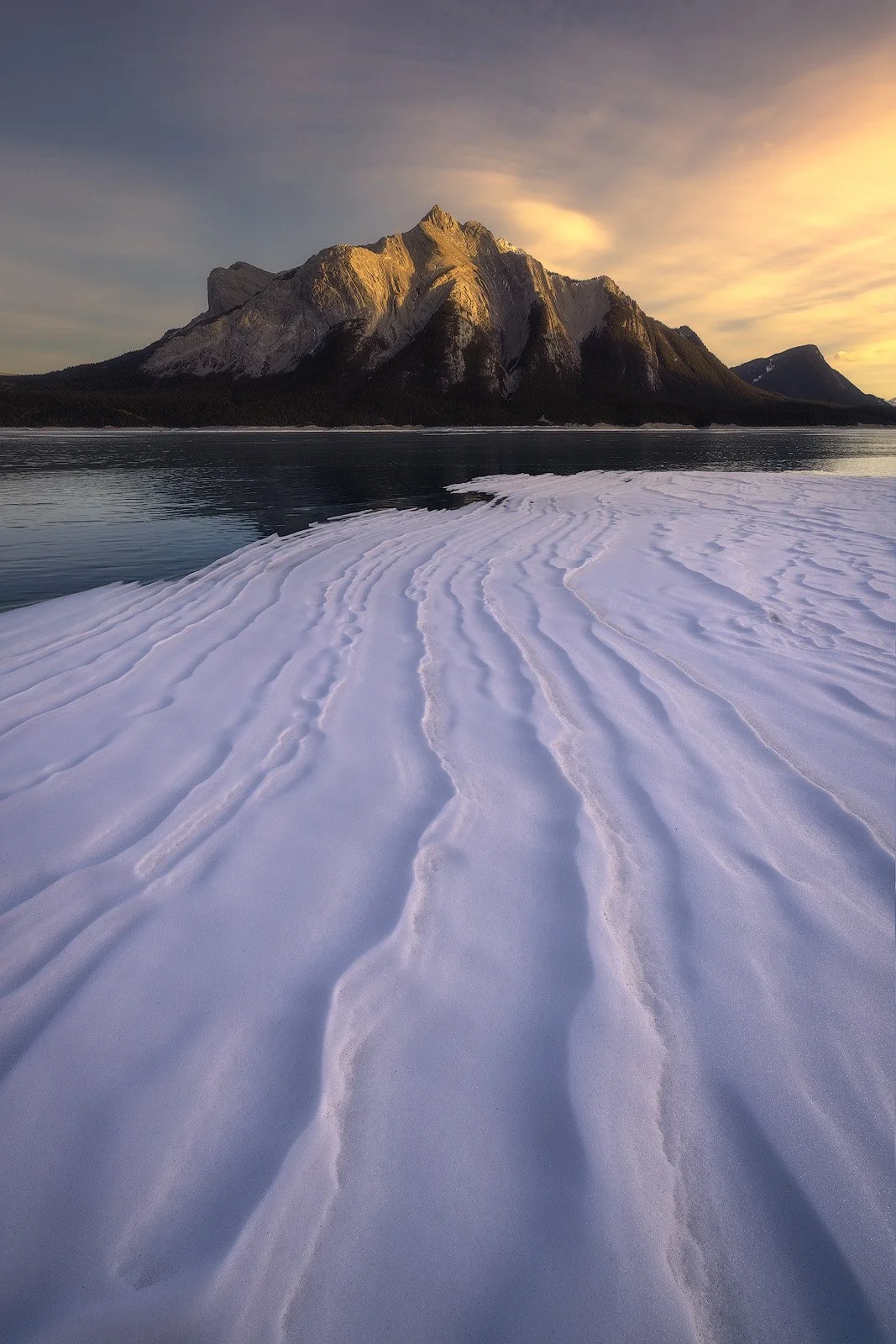 Image 1 of 1
Image 1 of 1


Winter Veins
Across the frozen expanse of Abraham Lake, the wind writes its marks in snow—thin ridges bending and branching like calligraphy across blue ice. Dawn gathers slowly over the Canadian Rockies. For a breathless minute at golden hour, Mount Michener burns with copper fire, the summit taking light as if from within, then cooling again to quiet shadow. The glow passes, but its memory lingers on the lake’s surface—a faint warmth laid over winter’s glass.
The ice speaks in small sounds. A distant groan, a hairline crack, the whisper of drifted snow slipping into new shapes. Beneath the skin of frost, frozen methane blooms in pale coins and rings; geometry suspended mid-motion. Each trapped bubble holds a fragment of time; each snow ridge maps a gust of wind that has already moved on. The air is sharp, clean, edged with the scent of pine carried from unseen slopes. Nothing hurries. Light moves like thought—careful, exact—finding veins in the ice and sketching them with silver.
From a high vantage, the composition arranges itself: mountain as anchor, wind-script as chorus, the lake as page. The scene favors restraint over spectacle, clarity over noise. It belongs to the patient craft of fine-art winter landscape photography, where form and stillness do the speaking. Ridges and bubbles read like score and notation—how the weather played, how the cold answered. Even the smallest detail feels deliberate: the curve of a snow curl lifting at its tip, the faint reflection of Michener tapering into cobalt.
Winter Veins holds to the pause between breath and echo. In that pause, distance grows close; silence turns articulate. The mountain cools, the lake settles, and the wind rewrites its lines. What remains is a quiet ledger of winter: light briefly kindled, motion briefly held, the great room of the Rockies listening while the ice remembers.
Across the frozen expanse of Abraham Lake, the wind writes its marks in snow—thin ridges bending and branching like calligraphy across blue ice. Dawn gathers slowly over the Canadian Rockies. For a breathless minute at golden hour, Mount Michener burns with copper fire, the summit taking light as if from within, then cooling again to quiet shadow. The glow passes, but its memory lingers on the lake’s surface—a faint warmth laid over winter’s glass.
The ice speaks in small sounds. A distant groan, a hairline crack, the whisper of drifted snow slipping into new shapes. Beneath the skin of frost, frozen methane blooms in pale coins and rings; geometry suspended mid-motion. Each trapped bubble holds a fragment of time; each snow ridge maps a gust of wind that has already moved on. The air is sharp, clean, edged with the scent of pine carried from unseen slopes. Nothing hurries. Light moves like thought—careful, exact—finding veins in the ice and sketching them with silver.
From a high vantage, the composition arranges itself: mountain as anchor, wind-script as chorus, the lake as page. The scene favors restraint over spectacle, clarity over noise. It belongs to the patient craft of fine-art winter landscape photography, where form and stillness do the speaking. Ridges and bubbles read like score and notation—how the weather played, how the cold answered. Even the smallest detail feels deliberate: the curve of a snow curl lifting at its tip, the faint reflection of Michener tapering into cobalt.
Winter Veins holds to the pause between breath and echo. In that pause, distance grows close; silence turns articulate. The mountain cools, the lake settles, and the wind rewrites its lines. What remains is a quiet ledger of winter: light briefly kindled, motion briefly held, the great room of the Rockies listening while the ice remembers.
